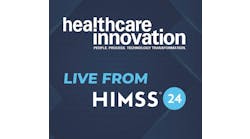On May 27, a trio of experts published an op-ed column in USA Today, entitled “The coronavirus and efforts to fight it could be fueling opioid deaths.” Katherine Baicker, Ph.D., Don Simborg, M.D., and Immanuel Thangaraj wrote the editorial. They began by stating that, “As May comes to a close, COVID-19 had killed nearly 100,000 Americans so far this year. This must clearly remain the focus of public health policy. But there is another epidemic that used to make headlines: opioid overdoses. These two crises feed each other in deadly ways. We’re desperately seeking new tools to fight COVID-19 — from vaccines to antivirals to technology — but we already have underused tools to fight opioid deaths.”
As the authors noted, “Almost 50,000 people died from opioid overdoses in 2018. The Health and Human Services inspector general concluded, ‘The 2020 COVID-19 pandemic makes the need to look at this population even more pressing.’ The COVID-19 pandemic tragically fuels the root causes of the opioid crisis, including depression, unemployment, poverty, social alienation and many other ‘conditions of despair.’ Some research suggests that every 1 percentage point increase in the level of unemployment translates into a 3.6% increase in the opioid death rate. If the pandemic increases unemployment rates by 10-20 percentage points, this could generate a staggering increase in opioid deaths that would compound the tragedy.”
The authors further believe that “[A]nother set of institutional factors that may cause the COVID-19 pandemic to worsen the opioid crisis, and that’s the change in the way we access health care. Thirty-two percent of opioid overdoses are from legally prescribed drugs such as oxycodone — roughly the same share as from heroin. Some of the deaths from legally prescribed drugs are in patients who take them for legitimate pain management. These patients need help to prevent abuse and death. Some deaths are in individuals using medications prescribed for someone else. This diversion is deadly.”
The authors further note that, while telemedicine-based healthcare delivery has been and continues to be very important in the midst of the COVID-19 pandemic, its use has “the potential to increase opioid abuse, diversion and death. Without a face-to-face encounter, a physician has limited ability to evaluate the condition of a patient seeking pain management. And one of the few policy tools available to check for patients “opioid shopping” by going to multiple providers — state-level prescription drug monitoring programs (PDMPs) — does not work across state lines. It seems like we are already experiencing COVID-19’s impact on opioid overdoses, with multiple reports showing a sharp local increases in opioid deaths.”
Ultimately, they say, while Americans are caught in the COVID-19 pandemic and its resulting economic crisis, there are “lower cost avenues that can help to forestall a rise in overdoses without limiting access to much needed care. State-level prescription drug monitoring programs must be strengthened, integrated into a national system and more easily accessed by prescribers. There are new technologies available to support desperately needed pain management while limiting the potential for diversion and overdose, including sophisticated pill tracking.”
Katherine Baicker is the Dean and the Emmett Dedmon Professor at the University of Chicago Harris School of Public Policy. Dr. Don Simborg, co-founder of NYK Digital and iKnowMed, is a founding member of the American College of Medical Informatics. Immanuel Thangaraj is a co-founder of NYK Digital, a former managing director of EW Healthcare Partners and former chairman of MAP International.
This week, Dean Baicker spoke with Healthcare Innovation Editor-in-Chief Mark Hagland regarding this current situation, and its implications for the near-term future of healthcare delivery. Below are excerpts from that interview.
Let’s start at a 40,000-foot-up level. How do you see the confluence between the opioid epidemic and the COVID pandemic potentially playing out in the near term?
We know that economic strain, cognitive strain, all of these are drivers of the opioid epidemic. And there’s been a lot of attention focused, quite rightly, on the depths of despair, and the connection to economic conditions, and that had been true even before the COVID-19 pandemic. Now we’re seeing huge economic and personal strain, limited access to mental healthcare, and this necessary shift to telemedicine, which is really important, but which is making it harder to psychologically assess patients. We want to make sure that patients have access to the medications they need, including pain medications. So how do you balance all of those things?
The challenge is how you maintain the access that’s beneficial to patients, while limiting the non-beneficial accessibility of things that can hurt people. And they’re competing needs pushing in different directions. Ideally, policy-makers get some tools that help them achieve both goals at the same time—for instance, these prescription monitoring regimens, to make sure that patients are being monitored for receiving drugs for too long or for potential diversion. Those databases could be harmonized and could be coordinated across states. The answer can’t be, no telemedicine; that would be terrible. You need policies that are more specific levers that can be pressed to effect change.
One example that comes to my mind is that of NEHII, the Nebraska Health Information Initiative, in Nebraska, the statewide health information exchange that was named the mandated prescription drug monitoring program (PDMP) for the entire state, and which has become a clearinghouse of prescribing information. Is that an example of the type of specific lever you’re thinking of?
Yes, that kind of robust, universal reporting, seems like the right model. We know that lots of people live within striking distance of other states, and unless we can get control across states, you have a leaky mechanism.
Do you see the various PDMP mechanisms in different states as key mechanisms?
Yes, the PDMP is one mechanism, and there are a lot of mechanics beneath that. And we do these kinds of things all the time. But also, there are complementary systems—more sophisticated pill-tracking systems, including biochemical markers, that can be used. And you can then say, this particular pill was prescribed to Patient X and was taken by Patient X on Monday, June 1. So that kind of system, combined with PDMPs that can be managed across state lines, would go a long way towards preventing abuse and diversions.
How capable are healthcare leaders, at the policy and operational levels, of accomplishing this?
Well, this will take a few different elements. Clearly, you need public officials at the state and federal levels, to implement policies. You also need cooperation from payers. Medicaid is an important payer in this space, but also, you need cooperation from private insurers. And some of the consequences of either too little access or too much access, accrue to the individual who needs the medication but is at risk for addiction; and some accrue to others, through diversion, people who are not the insured lives. So of course, payers will have an interest in diversion from the economic standpoint, whereas public health officials, who may be the ones managing the original prescription recipient or not, may have a vested interested in preventing diversion. And who is being monitored will affect who has the greatest stake in this, will determine what decisions are made.
How do you see all of this playing out in the next five years?
I think our reliance on technology to improve healthcare delivery will increase substantially in the next five years. It might have happened anyway, but the COVID challenge is accelerating telemedicine. Similarly, everyone is quite justifiably concerned about the privacy issues associated with cellphone tracking and the like, but there are potentially technological fixes that allow better contact tracing and network mapping, while maintaining confidentiality, and we may all be in a different position to make tradeoffs, in a world in which we’re all familiar with the consequences of unchecked disease. So as citizens and voters, we may make different types of decisions that may apply to phenomena like telemedicine and contract tracing and pill tracking.
What advice might you like to share with our patient care organization executive audience, in terms of things they should be thinking about or doing right now?
Well, I think, overall, harnessing data collection capabilities is going to be crucial to healthcare delivery and health discovery in the coming years. And this is something we’ve been struggling with, when you think about electronic health records and interoperability; we haven’t gotten it right yet, but we’re beginning to see the returns from interoperability as it applies to the silos in HC. Patients move across systems; patients are whole bodies that interact with different systems. And the greatest returns will happen when we use the data to span what had before been siloed delivery systems and disease mechanisms. So this is an example where there is all sorts of data that would help prevent misuse, overuse, and overdosing, with regard to opioids.
So interoperability will be one key going forward, in this?
Yes, it absolutely will be.


